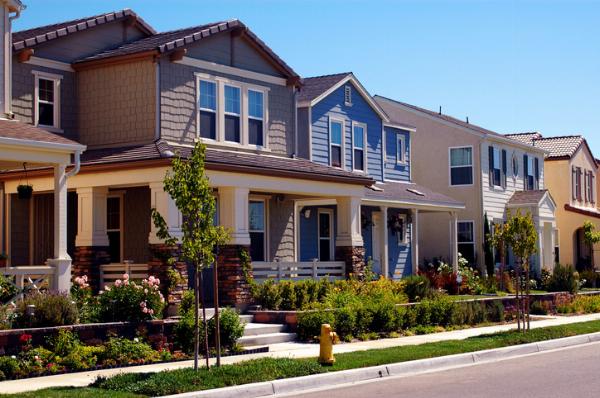 Social Media Content Packs – Stay Active Without Lifting a Finger!
Social Media Content Packs – Stay Active Without Lifting a Finger!
The Rise of "Bostadsrättsförening" (BRF) Financial Vulnerabilities in a Higher Interest Rate Environment: Navigating the Swedish Real Estate Landscape
Written by ayshharoy » Updated on: May 27th, 2025


Introduction
The Sweden Real Estate Market long characterized by stability and attractive investment opportunities, is currently navigating a significant shift. While individual homeowners face increasing mortgage costs, a potentially more systemic vulnerability is emerging within the structure of Bostadsrättsföreningar (BRF), the prevalent form of cooperative housing in Sweden. As interest rates climb from historically low levels, the financial health of many BRFs is coming under increasing scrutiny, posing potential risks to residents, the broader housing market, and the Swedish economy. This article delves into the intricacies of BRFs, the impact of the higher interest rate environment, and the potential consequences for this cornerstone of Swedish housing.
Understanding Bostadsrättsföreningar (BRFs): The Foundation of Swedish Cooperative Housing
A Bostadsrättsförening, often translated as a housing cooperative or tenant-owner association, is a legal entity that owns and manages a residential building or a group of buildings. Instead of directly owning their apartment, residents purchase a share or "bostadsrätt" (housing right) in the association. This right grants them the exclusive use of a specific dwelling.
Key characteristics of BRFs include:
• Member Ownership and Governance: The members (residents holding bostadsrätter) collectively own and govern the BRF through an elected board. This board is responsible for the financial management, maintenance, and overall well-being of the property.
• Monthly Fees (Avgifter): Residents pay a monthly fee (avgift) to the BRF. This fee covers the association's operating expenses, including building maintenance, utilities for common areas, insurance, and, crucially, loan interest and amortization.
• Collective Responsibility: Financial obligations, including loans taken out by the BRF for renovations or acquisitions, are the collective responsibility of the members. If the association faces financial difficulties, members may be required to contribute more through increased monthly fees.
• Prevalence in Urban Areas: BRFs are particularly common in Swedish cities and towns, representing a significant portion of the housing stock.
The Era of Low Interest Rates: A Period of Relative Calm
For an extended period, Sweden, like many other developed economies, experienced historically low interest rates. This environment had several positive effects on BRFs:
• Lower Borrowing Costs: BRFs that had taken out loans for property acquisition or renovations benefited from low interest payments, keeping monthly fees relatively stable.
• Increased Property Values: The low interest rate environment contributed to rising property values, indirectly bolstering the financial position of BRFs as their underlying assets appreciated.
• Affordable Housing Costs (for some): Lower interest rates helped maintain relatively affordable monthly fees for residents, making BRF living an attractive option.
The Turning Tide: The Impact of Rising Interest Rates
In response to rising inflation, the Swedish central bank, Riksbanken, has embarked on a course of interest rate hikes to cool down the economy and stabilize prices.
The higher interest rate environment has several direct and indirect consequences for BRFs:
• Increased Loan Interest Payments: A significant portion of many BRFs' expenditures goes towards servicing loans. As interest rates rise, these payments increase substantially, putting pressure on the association's finances. Many BRFs have variable interest rate loans or will face refinancing at higher rates in the near future.
• Pressure to Increase Monthly Fees (Avgifter): To cover increased interest costs and maintain essential services, BRF boards are often forced to raise the monthly fees charged to residents. This directly impacts the affordability of living in a BRF and can strain household budgets.
• Potential for Decreased Property Values: Higher borrowing costs can dampen demand in the housing market, potentially leading to a stagnation or even decrease in property values. This can weaken the financial position of BRFs in the long term.
• Challenges in Funding Future Renovations: With higher debt servicing costs, BRFs may find it more challenging to save for necessary future renovations, potentially leading to a backlog of maintenance and further financial strain down the line.
• Risk of Member Defaults: As monthly fees rise and the economic climate becomes more uncertain, some members may struggle to meet their financial obligations, potentially leading to payment defaults and further financial instability for the BRF.
Identifying the Vulnerabilities: Which BRFs are Most at Risk?
Not all BRFs are equally vulnerable to the higher interest rate environment. Several factors contribute to the level of financial risk:
• High Loan-to-Value Ratio: BRFs with significant outstanding loans relative to the value of their property are more susceptible to interest rate fluctuations. Those that financed large renovations or acquisitions with substantial debt are particularly at risk.
• Short Fixed-Rate Periods or Variable Interest Rates: BRFs with loans tied to variable interest rates or those with short fixed-rate periods facing imminent refinancing will experience the impact of rising rates more immediately and acutely.
• Insufficient Reserves: BRFs with limited financial reserves to buffer against unexpected cost increases are more likely to be forced into raising monthly fees or delaying essential maintenance.
• Aging Buildings with Deferred Maintenance: BRFs with older buildings requiring significant upcoming renovations will face increased financial pressure as borrowing costs rise.
• High Monthly Fees Relative to Member Income: BRFs where the existing monthly fees already represent a significant portion of the members' average income have less room to raise fees without causing financial hardship and potential defaults.
• Poor Financial Management: Inefficient budgeting, lack of long-term financial planning, and inadequate oversight can exacerbate the impact of rising interest rates.
Consequences of Widespread BRF Financial Distress
If a significant number of BRFs experience financial difficulties, the consequences could be far-reaching:
• Increased Housing Costs: Higher monthly fees will make BRF living more expensive, potentially impacting housing affordability, especially in urban areas where BRFs are concentrated.
• Reduced Property Values: Financial distress in BRFs could lead to forced sales and potentially depress property values in affected areas, creating a ripple effect across the housing market.
• Impact on Individual Finances: Residents facing steep increases in monthly fees may have to cut back on other spending, impacting the broader economy. In severe cases, some individuals might face financial hardship or even the need to sell their bostadsrätt at a potentially unfavorable time.
• Risks to the Banking Sector: Swedish banks hold a significant amount of loans to BRFs. Widespread financial distress in the BRF sector could pose risks to the stability of the banking system.
• Social and Political Implications: Housing affordability is a significant social and political issue in Sweden. A crisis in the BRF sector could lead to increased social inequality and political pressure on the government to intervene.
Navigating the Challenges: Strategies for BRFs and Policymakers
Addressing the growing financial vulnerabilities of BRFs requires a multi-faceted approach involving proactive measures by the associations themselves and potential policy adjustments.
Strategies for BRFs:
• Thorough Financial Review: BRF boards should conduct a comprehensive review of their financial situation, including loan terms, interest rate exposure, reserve levels, and future maintenance needs.
• Long-Term Financial Planning: Implementing robust long-term financial plans that account for potential interest rate fluctuations and future renovation costs is crucial.
• Energy Efficiency Measures: Investing in energy-efficient upgrades can help reduce operating costs and mitigate the impact of rising expenses.
• Exploring Refinancing Options: Carefully evaluating refinancing options to potentially secure more favorable interest rates or longer fixed-rate periods is advisable.
• Transparent Communication with Members: Open and transparent communication with residents about the financial situation and any necessary fee adjustments is essential to maintain trust and understanding.
• Building Sufficient Reserves: Prioritizing the accumulation of financial reserves to cushion against unexpected cost increases and future investments is vital.
• Professional Financial Management: Engaging professional property management companies or financial advisors with expertise in BRF finances can provide valuable guidance.
Potential Policy Responses:
• Government Support Measures: The government could consider targeted support measures for vulnerable BRFs, such as offering loan guarantees or subsidies for energy efficiency upgrades.
• Regulatory Framework Review: A review of the regulatory framework governing BRFs might be necessary to ensure adequate financial resilience in a changing economic environment. This could include guidelines on reserve levels or loan structures.
• Financial Literacy Initiatives: Providing resources and education to BRF board members on financial management best practices could help improve the overall financial health of the sector.
• Monitoring and Early Warning Systems: Implementing better monitoring systems to identify BRFs at risk of financial distress could allow for early intervention and preventative measures.
Conclusion
The rise in interest rates presents a significant challenge to the financial stability of many Bostadsrättsföreningar in Sweden. While the cooperative housing model has historically provided affordable and stable housing for a large portion of the population, the current economic climate demands careful attention to the growing vulnerabilities within the system. Proactive measures by BRF boards, coupled with potential policy adjustments, will be crucial to navigate this period of uncertainty and ensure the long-term sustainability of this vital component of the Swedish real estate market. Failure to address these financial risks could have significant consequences for individual residents, the housing market, and the broader Swedish economy. As the economic landscape continues to evolve, the resilience and adaptability of BRFs will be a key determinant of the future of Swedish housing.
Note: IndiBlogHub features both user-submitted and editorial content. We do not verify third-party contributions. Read our Disclaimer and Privacy Policyfor details.
Copyright © 2019-2025 IndiBlogHub.com. All rights reserved. Hosted on DigitalOcean for fast, reliable performance.

















